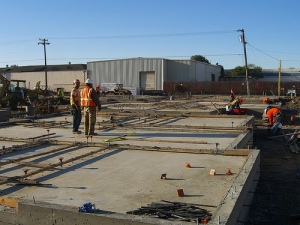Today I’m unveiling a new column here at Construction Law in North Carolina called “News Notes”. News notes will be postings of current news items relating to the design (and construction) community. [This means that sometimes I must be a tad drier than my usual festive self. Consider yourself warned.] If you have an idea for a News Note, drop me a line.
Much to the delight of developers and realtors across the state, the North Carolina Supreme Court recently affirmed a decision which struck down local school impact fees. The fees had been assessed to fund construction of new schools in the Cary portion of the Wake County schools to help with the Town ofCary’s rapid growth.
Impact fees are usually enacted by local boards and town councils as Adequate Public Facilities Ordinances (APFO). In 1999, the Town of Cary began assessing school impact fees on developers in certain portions of the town which faced overcrowding. The revenue brought in by the fees was earmarked to pay for expansion of existing school facilities. Notably, the Town of Cary has no separate school system from the rest of Wake County, and did not have the legal authority to control the provision of school facilities within the district.
Last month, the state Supreme Court, in a tight 3-3 tie decision (with one abstention) left the Court of Appeals decision in place, rejecting the Town’s attempt to collect school facilities fees and declaring the fees illegal. [As an aside, my firm represented another developer who intervened in the lawsuit; however, the facts were somewhat different and we were not involved in this appeal.]
The Cary case is not the first time the issue has arisen in the state. Currituck County once proposed a similar APFO to fund school construction during the real estate boom as out-of-state residents from Virginia crossed into North Carolina in an attempt to flee the taxes and dismal school system in Chesapeake,Virginia.
The Currituck proposal was widely criticized by both local and state homebuilder’s associations. Across North Carolina, homebuilders and realtor groups worked together to stop attempts at passing such impact fees. These organizations have run into problems as cash-strapped local governments see impact fees as one method of paying for increasingly expensive public school construction.
The theory is that developers of new homes pass the impact fees along to new home buyers by raising the price of homes or lots. Existing residents are spared the tax increases caused by a rapid influx of new residents with school-aged children. Thus, the people responsible for the increased strain on the school system – the new residents – bear the burden of the tax increase.
Over the past decade, Durham, Union County, and Cabarrus County have instituted similar impact fees. All three such attempts were disallowed by various courts. Thus far, virtually all attempts at imposing such fees have been struck down, although there appears to be wiggle room in the case law. For example, impact fees collected for improvements that directly run to the property (such as water or sewer lines) are typically allowed. Additionally, other municipal governments impose fees related to schools that have not (yet) been decided in the state court system, and those may be broad enough to pass judicial scrutiny.
In this case, Cary’s ordinance assessed residential developments a mitigation fee if they did not first obtain a certificate from Wake County certifying classroom availability. Over $4 million was ultimately collected since the ordinance was first passed in 1999. Cary is now faced with the prospect of returning these fees, plus over $300,000 in attorney fees awarded to the developers who filed suit. Ouch!!!
Comments or questions? Post in the comment section, below.
Photo (c) Ivy Dawned via Creative Commons license.



